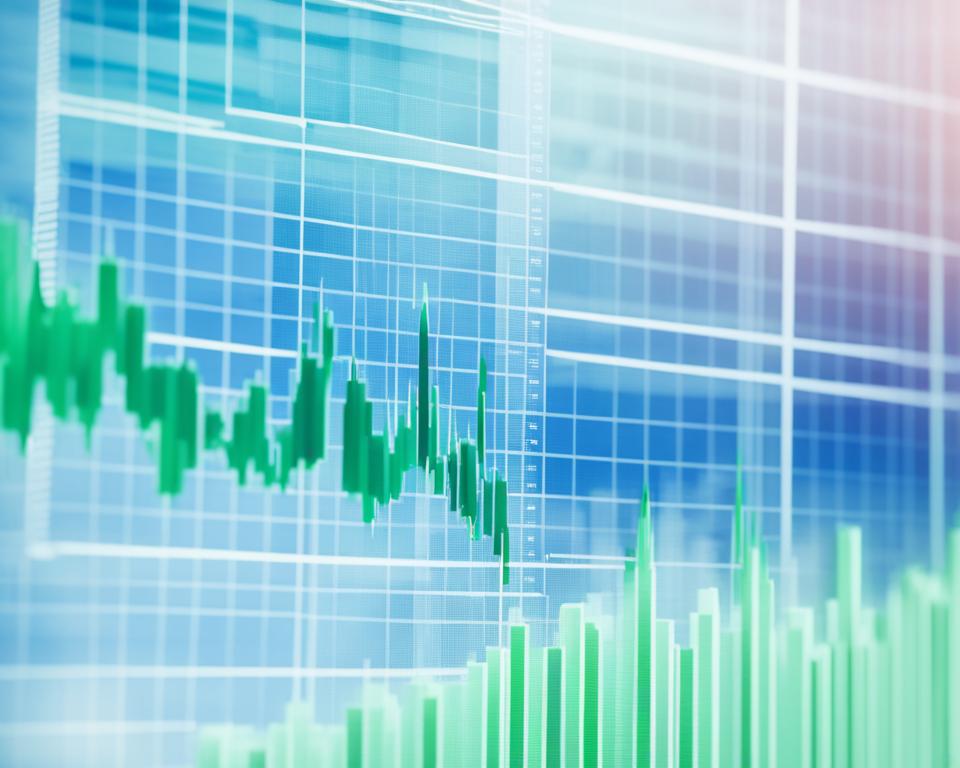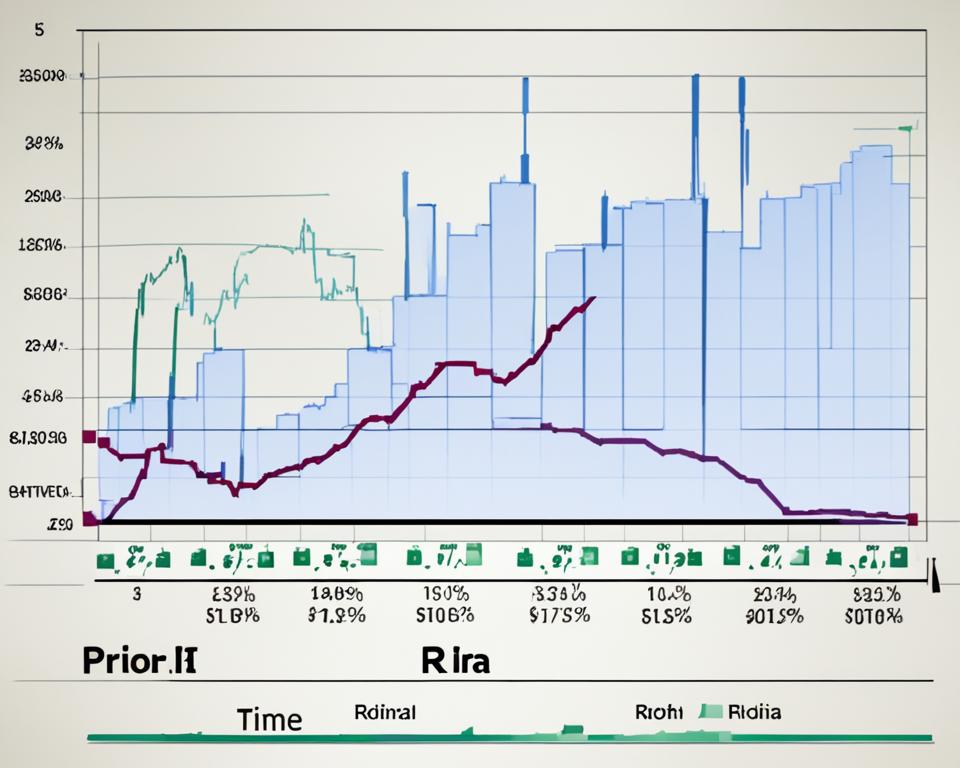When the market shows signs of turbulence, investors might clamor for reliable avenues to mitigate losses. One approach that often comes to good stead is investment in dividend stocks. Market volatility can yield potential investment opportunities, especially when one considers the noteworthy performance of dividend stocks across different sectors. According to Morgan Stanley’s Global Investment Office, selective dividend stocks could offer a safe haven amid choppy market conditions. The historical performance of different sectors also underlines this perspective, with the role of dividends growing ever more important in overall market returns.
Take for instance the S&P 500 Index: from 2013 to 2022, 17% of its total return was drawn from dividends. Inferring from historical data, starting from the 1930s, dividends accounted for an average of 37% of total returns. In a particularly volatile 2022, while the S&P 500 Value Index lost about 5%, the S&P 500 High Dividend Index managed to cap its losses at around 1%. That’s not all – Morgan Stanley’s Dividend Equity model portfolio even achieved a positive return of 1.8%. Evidently, dividend stocks sector analysis suggests that dividend stocks not only signify a company’s financial robustness but also act as a buffer during uncertain market climates.
Key Takeaways
- Investing in select dividend stocks can be a helpful defensive strategy during times of market volatility.
- In recent years, dividends have played an increasingly significant role in stock market returns.
- The S&P 500 High Dividend Index showed a more resilient performance compared to the overall market in 2022.
- Dividend stocks across different sectors offer potentially varied returns, underlining the need for sector performance analysis during market volatility.
- Morgan Stanley’s Dividend Equity model portfolio’s positive return despite market turbulence highlights the potential of a well-curated selection of dividend stocks.
The Role of Dividend Stocks in Mitigating Portfolio Volatility
In the face of unpredictable market scenarios, dividend stocks have emerged as a credible safety net. Their robustness during turbulent times is becoming increasingly recognized, making them attractive to investors looking to strike a balance between stability and income generation.
Understanding the Stabilizing Effect of Dividends
Historically, dividends have softened the impacts of significant market downturns. Particularly, stocks that have demonstrated a steady growth in their dividends have been instrumental in ensuring long-term portfolio gains. They provide a reassuring resilience during economic downturns that few market instruments can rival.
Comparing Dividend Returns to Overall Market Performance
Demonstrating the substantial role of dividend stocks in curbing portfolio volatility, let us consider the market performance in 2022. The S&P 500 Value Index and the S&P 500 High Dividend Index, both closely associated with dividend payers, performed much better than the overall S&P 500, experiencing significantly lesser losses. This underscores the mitigating effect of dividend payouts on portfolio volatility and reiterates the importance of dividend stocks during periods of market instability.
Industrial Sector: Defense and Waste Management Dividend Stocks
The industrial sector, with its wide range of specialties like manufacturing, transportation, and defense, holds potent opportunities for dividend-seeking investors. The increased appeal of this sector, particularly in defense and waste management niches, is evident amidst prevailing market volatility. A detailed appraisal of these subsectors can reward vigilant investors with a rich yield in the form of progressive dividends.
Defense Companies as Strong Dividend Payers Amid Geopolitical Tensions
Defense companies are gaining ground, courtesy of the expected 10% boost in defense spending for 2023. This surge, substantiated by bipartisan policy support, addresses rising geopolitical tensions and the need for equipment upgrade. Government-backed aeronautics and space programs tend to provide fertile ground for promising dividend returns. Therefore, investors could exploit this growth propeller for diversified income generation.
Waste Management Stocks and Sustainable Investment Opportunities
The waste management sector is another rewarding avenue within the industrial domain. Companies that offer a holistic suite of services can capitalize on the increasing trend of sustainable investments in this sector. This trend, coupled with robust sector growth, assures stable dividends, depicting a reassuring picture for investor confidence in waste management stocks.
In conclusion, both these subsectors showcase a strong capacity for sustaining dividends amid market volatility, thereby making a valuable entry to the portfolio of dividend investors. Therefore, an accurate comparison of ‘dividend stocks sector returns’, and a meticulous ‘market volatility dividend stocks comparison’ will equip investors to make informed decisions while assessing ‘sector-wise dividend stocks performance’.
Health Care Sector: A Defensive Investment Haven
Market fluctuations constantly alter the investment landscape. Amidst this, some sectors perform remarkably well. One such standout is the health care sector. This sector, over the past four recessions, has surprised many by surpassing market performance by 13 percentage points.
What sets the health care sector apart? The reasons are twofold. Firstly, it is the relentless surge of innovation, such as advances in the fields of genomics and medical AI. Secondly, strategic movements within the sector itself, such as the vertical integration pursued by managed-care organizations have bolstered its strength. This enables these organizations to reduce costs and widen their profit margins, ensuring their continued prosperity during volatile times.
“During the periods leading up to U.S. presidential elections, valuations in the health care industry often dip, presenting opportune entry points for savvy investors.”
As part of a defensive investment strategy, health care sector dividend stocks are particularly alluring. They serve a dual purpose – they foster growth while providing a defense against market volatility. Thus, as we weather any future storms, the health care sector will remain a steadfast investment harbor.
Consumer Staples: Stability and Growth During Economic Uncertainty
In an era of constant economic fluctuations, the consumer staples sector stands out as a bastion of stability, offering a compelling blend of reliable earnings, escalating dividends, and diminished volatility. These traits are particularly useful for savvy investors seeking defensive strategies to navigate market swings and uphold portfolio valor. This section will delve deeper into the fundamentals of this sector and examine the factors that make it a prime consideration for dividend investors.
Price-Resilient Companies and Their Dividend Paying Capacity
One distinguishing strength of companies in the consumer staples sector lies in their ability to adjust prices without significantly impacting sales. This pricing power comes from the durable demand for their goods, providing a level of immunity against inflation and economic uncertainty, which, in turn, underpins their dividend-paying capacity. In such times, businesses bolstering their revenues through strategic sales and marketing initiatives emerge as strong contenders for portfolio inclusion.
Assessing the Impact of Commodities Prices on Profit Margins
The impact of enduring high commodities prices presents an imminent challenge for companies in the consumer staples sector, adversely affecting their gross profit margins. However, with these pressures showing signs of subsiding, a select group of companies is expected to experience improvements in their profit margins. These emerging bright spots could pave the way for continued or even enhanced dividend payouts, further enhancing the sector’s appeal to dividend seekers.
As one undertakes a dividend stocks sector analysis, it’s clear that consumer staples sector dividends play a pivotal role in shields against volatile market landscapes. Investors may find it prudent to focus on firms with enticing valuations, underpinned by a strong track record of consistent dividend distributions. Armed with this knowledge, they face an upper hand in insulating their investments against the ebbs and flows of economic uncertainty.
| Company | Dividend Yield (%) | 5-Year Dividend Growth (%) | Payout Ratio (%) |
|---|---|---|---|
| The Procter & Gamble Company | 2.2 | 4.2 | 58.5 |
| The Coca-Cola Company | 2.9 | 3.2 | 78.2 |
| PepsiCo, Inc. | 2.8 | 7.8 | 70.6 |
| Walmart Inc. | 1.5 | 1.9 | 40.1 |
| Philip Morris International Inc. | 5.1 | 2.6 | 77.8 |
The Appeal of Dividends in the Volatile Tech Sector
The technology sector presents a blend of dividend prospects and growth potential but is accompanied by inherent volatility. Investors willing to tolerate the swings in search for income and growth might lean towards established tech giants paying dividends. Conversely, growth-oriented tech firms might forgo dividends in pursuit of rapid expansion. This juxtaposition within the tech domain requires careful risk assessment, as shareholder returns can fluctuate significantly.
Dividend Paying Tech Giants Versus Growth Focused Firms
Thriving in the intersection of volatility and dividend stocks correlation, dividend-paying tech giants have demonstrated resilience in the face of market upheavals, offering steady returns to their shareholders. By contrast, high-growth tech companies, albeit lucrative, may decide to hold on to their earnings to fuel further expansion, thereby potentially bypassing the option of distributing dividends. This presents a decision-making challenge for dividend-seeking investors: choosing between the stable returns of established tech companies and the high-growth potential of emerging tech startups.
Assessing the Risks of High Volatility in Tech Dividends
Although it’s true that tech sector dividends can be enticing, they come with a certain degree of risk that cannot be overlooked. The market volatility commonly associated with this sector can lead to significant fluctuations in shareholder returns. Therefore, thorough evaluation of a tech company’s dividend stability is crucial before deciding to invest. Despite the risks, for those with a higher risk tolerance, the potential for broader price gains may outweigh the uncertainties.
Overall, the tech sector stands as a dynamic but mixed bag for those seeking dividends during tempestuous market conditions. By maintaining a balanced approach, being patient, and assessing risks wisely, investors can potentially capitalize on lucrative opportunities in the tech sector.
Global Dividend Stocks: Diversifying Beyond the U.S. Market
In the ever-changing financial landscape, global markets present fertile grounds for global dividend payers. These entities offer robust opportunities for investors willing to expand their horizons, diversifying their dividend stock holdings beyond the confines of the American market. International equities form a vibrant alternative, often touting significantly higher dividends when compared to their U.S. counterparts, where stock buybacks have traditionally reigned supreme. Yet, expanding globally isn’t merely about chasing higher dividend yields.

The move echoes a broader perspective in portfolio diversification, offering a protective shield against the volatility storms that occasionally batter domestic markets. By casting the net wider, investors can tap into the dynamic momentum propelling international stocks, solidifying their portfolios against the ebb and flow of U.S. market demands. Here’s an illustration of some renowned international dividend stocks:
| Stock | Country | Industry | 5-Year Dividend Growth(% Annualized) |
|---|---|---|---|
| Royal Dutch Shell | Netherlands | Oil & Gas | 4.12 |
| BP | UK | Oil & Gas | 3.08 |
| Unilever | Netherlands | Consumer Goods | 8.27 |
| Roche Holding AG | Switzerland | Pharmaceuticals | 5.94 |
The table, while illustrative, is by no means exhaustive. The world of international dividends is elegantly diverse, beckoning investors with assorted preferences and risk-tolerance levels. Exploring global dividend stocks isn’t merely smart—it’s strategic.
Financial Health Indicators for Dividend Stocks
Investing in dividend stocks requires a keen eye for details and an understanding of financial health indicators. Two crucial factors in assessing the financial health of a dividend stock are the dividend-coverage ratios and cash flows. These factors provide insight into a company’s potential to maintain, and possibly increase, dividends throughout economic cycles.
Importance of Dividend-Coverage Ratios
The dividend-coverage ratio is a significant financial indicator that measures a company’s net income relative to the dividend it pays. This ratio indicates whether a firm’s earnings are sufficient to cover dividend payments. A higher dividend-coverage ratio is favorable and usually signifies a financially sound firm capable of sustaining its dividend pay-out. Conversely, when a stock offers high yields, it may signal financial distress, hinting at potential dividend cuts.
Assessing Free Cash Flow as a Predictor of Dividend Stability
Besides the dividend-coverage ratio, assessing a company’s free cash flow also plays a critical role in evaluating its financial health. Companies with substantial free cash flows are generally in a healthier financial position, making them more likely to maintain their dividends during economic downturns. Therefore, investors must look at these metrics simultaneously to assess the firm’s overall dividend sustainability.
Understanding these financial health indicators is paramount in navigating the realm of dividend stocks. Investors should focus on companies with stable management, satisfactory dividend-coverage ratios, ample free cash flow, and a consistent pattern of dividend growth.
| Aspect | Why it Matters |
|---|---|
| Dividend-Coverage Ratios | This ratio measures if a company’s earnings are enough to cover its dividend payments. A higher ratio indicates a financially stable company likely to maintain dividend payments. |
| Free Cash Flow | Companies with strong free cash flows are in a healthier financial position, suggesting they can sustain their dividend payments, even in economic downturns. |
Investment Strategies for Dividend Stocks in Volatile Markets
Market volatility can make the investing landscape turbulent and daunting, but with the right strategies, it can be navigated profitably. When it comes to dividend stocks, crafting an effective investment strategy in the midst of this volatility involves exploring various avenues. This includes implementing a blend of investment through individual stocks, ETFs, and mutual funds. Diversification is key, shielding against the headwinds of price declines. Additionally, the way dividends are managed can make a significant positive impact on long-term returns.
Finding the Right Mix: ETFs, Mutual Funds, and Individual Stocks
The robustness of a dividend-focused investment strategy heavily relies on a judicious mix of assets. Individual dividend stocks, especially those with consistent historical payout records and optimal dividend yields, can be a worthwhile consideration. Alongside, Exchange-Traded Funds (ETFs) that track indexes of dividend-paying stocks offer a less risky alternative, ensuring broad market exposure. Mutual funds concentrating on dividends can further provide active management and rigorous stock selection, potentially identifying high-quality dividend stocks ahead of the curve. Irrespective of the investing avenue, the key lies in diversification to buffer against singular stock or sector-specific downturns.
Strategic Reinvestment of Dividends for Long-Term Benefit
A vital cog in the wheel of a successful dividend strategy is the practice of strategic reinvestment. By reinvesting dividends, investors can tap into the power of compounding, which over time, can significantly amplify portfolio returns. As per historical data, portfolios that opted for dividend reinvestment have seen nearly double the value compared to those that cashed out. This longevity-oriented approach to dividends is especially pertinent in funds that target dividend growth, thereby syncing with the trend of increasing payouts alongside inflation. The investor’s life stage, whether they are approaching retirement or are in the growth phase, can guide dividend deployment strategies for maximized portfolio benefits.
Conclusion
During periods of market volatility, a comprehensive understanding of the interplay between various sectors and their dividend stocks performance can drastically improve an investor’s chances of success. The key to developing such insights is a deep dive into the specifics of each sector, assessing their potential for stable or increasing dividends.
Sectors such as industrials, health care, and consumer staples act as robust shelters, providing resilience against turbulent markets. On the other end of the spectrum, the tech sector carries with it a fair amount of risk, but it can prove quite profitable for those willing to take it on. Investing in dividend stocks from these sectors, with careful attention to each’s unique characteristics and the prevailing economic atmosphere, can yield considerable benefits.
In addition to domestic options, expanding the investment scope to incorporate global dividend stocks can add a valuable layer of portfolio diversity. International holdings not only offer a hedge against domestic market volatility but also expose investors to regions where dividend payouts have outpaced local markets.
In the pursuit of sustainable long-term gains, focusing on companies with substantial financial health indicators and using a mixed investment strategy, should be prioritized. The strategic reinvestment of dividends, a sound practice that can significantly multiply returns, deserves prime consideration as part of any well-thought-out investing approach. Proper diligence and strategic planning, hence, remain the bulwark against market instability in dividend stock investment.
FAQ
How do dividend stocks in different sectors perform during market volatility?
Amid fluctuating market conditions, dividend stocks in select sectors such as industrials, health care, consumer staples, and technology can serve as sturdy anchors. Industrial firms exuding strength, particularly defense and waste management companies, are primed for strong dividends. Health care stocks shine as defensive investments, outperforming general markets during recessions by a substantial margin. Consumer staples present a blend of steadfast earnings, escalating dividends, and curtailed volatility, useful during economic instability. Although the tech sector can be volatile, its blend of dividend prospects and growth potential can be lucrative for risk-tolerant investors.
What role do dividend stocks play in mitigating portfolio volatility?
Historically, dividends have cushioned the blow during significant market downturns and contributed extensively to long-term portfolio gains. Dividend-paying stocks, particularly those with steady dividend growth, are robust during economic downturns. Additionally, indexes closely aligned with dividend payers often fare better than the broader market.
How do defense and waste management dividend stocks perform in the industrial sector?
Defense firms, benefiting from increased cash flows driven by enhancements in defense spending, are poised for lucrative dividend returns. Waste management companies, particularly those with broad service offerings, could gain from a surge in sustainable investments, contributing to stable dividends and sector growth.
Why is the health care sector considered a defensive investment haven?
The health care sector has consistently surpassed market performance during recessions. Its allure is enhanced further by innovation and strategic maneuvers, such as vertical integration by managed care organizations to cut costs and widen margins. In times of volatility, health care stocks remain an enticing area for dividend investors seeking both growth and protection against market distress.
How do consumer staples provide stability and growth during economic uncertainty?
Companies within the consumer staples sector often boast durable earnings, escalating dividends, and diminished volatility, particularly beneficial during economic instability. Certain businesses can elevate prices without impacting sales and are fortifying their revenues through sales-and-marketing investments, making them potentially strong dividend payers.
How does the tech sector balance the appeal of dividends?
While the technology sector is inherently volatile, established tech giants paying dividends can provide income and growth opportunities. However, growth-focused tech firms might forgo dividends to pursue rapid expansion. Therefore, investors should carefully assess the risks associated with tech dividends, as shareholder returns can fluctuate significantly.
What are the advantages of investing in global dividend stocks?
International equities often offer higher dividends compared to U.S. counterparts and provide a hedge against domestic market volatility. Such diversity enables investors to tap into the momentum of international stocks, mitigating the ebb and flow of U.S. market whims.
What are the crucial financial health indicators for dividend stocks?
Metrics such as the dividend-coverage ratio and strong free cash flows are essential to examine. Companies with high dividend-coverage ratios are more likely to sustain and increase dividends throughout economic cycles, providing relative stability amid market volatility.
What strategies should be employed for investing in dividend stocks in volatile markets?
Diversification is key, providing a shield against price declines. Reinvesting dividends can significantly boost returns over time, as historical data reveals that portfolios reinvesting dividends can nearly double in value compared to those that do not. The investor’s particular stage in life can also guide dividend deployment strategies for optimal portfolio outcomes.












